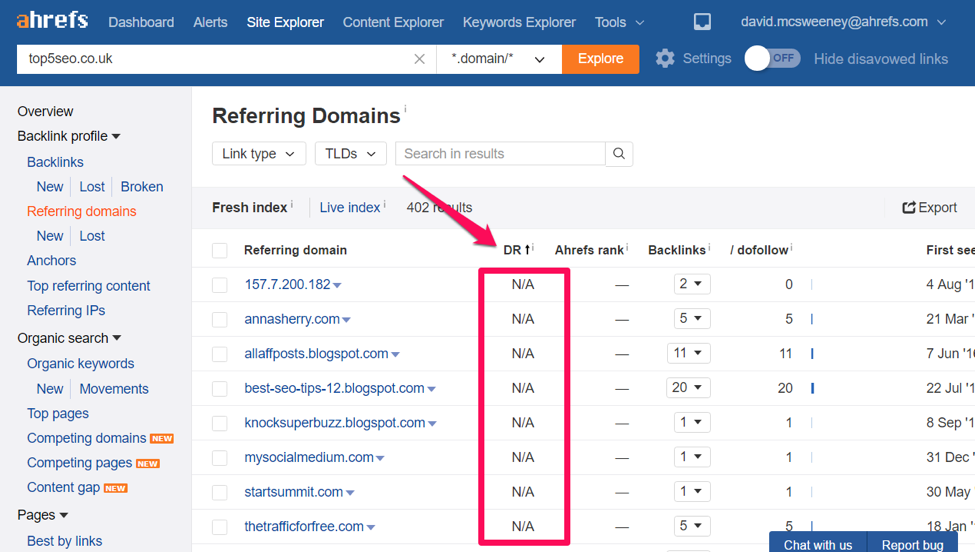The Dos and Don’ts of SEO: Avoiding Common Mistakes
I. Introduction
Search engine optimization, or SEO, is the process of optimizing your website to improve its visibility and ranking on search engine results pages (SERPs). It’s a critical component of digital marketing and is essential for businesses and websites that want to attract organic traffic, increase their online presence, and generate leads and revenue.
The importance of SEO cannot be overstated. With billions of websites on the internet, the competition for visibility and traffic is fierce. And with search engines like Google constantly updating their algorithms and ranking factors, it’s essential to keep up with the latest best practices and trends to ensure your website remains competitive.
At its core, SEO is about improving the user experience and ensuring that your website is relevant and valuable to your target audience. This means creating high-quality content, optimizing your website structure and navigation, building quality backlinks, and ensuring that your website is fast, secure, and mobile-friendly.
Keyword research is also an essential component of SEO. By identifying the keywords and phrases that your target audience is searching for, you can create content that addresses their needs and interests, and optimize your website accordingly. It’s important to note, however, that keyword stuffing and other black-hat SEO techniques are not effective and can actually harm your website’s ranking and reputation.
Another critical aspect of SEO is tracking and analyzing your website’s performance. By using tools like Google Analytics and Search Console, you can monitor your website’s traffic, engagement, and conversion rates, and identify areas for improvement. Regularly updating and maintaining your website’s content and structure is also crucial for maintaining and improving its ranking and visibility over time.
In summary, SEO is a complex and ever-evolving field that requires constant attention and adaptation. By following best practices and avoiding common mistakes, you can ensure that your website is optimized for search engines and is able to attract and retain organic traffic.
II. The Dos of SEO
In the world of search engine optimization, there are certain best practices that are considered essential for improving your website’s visibility and ranking on search engine results pages. Here are some of the dos of SEO that you should keep in mind:
1. Conduct keyword research
Keyword research is the process of identifying the keywords and phrases that your target audience is searching for. By using tools like Google Keyword Planner or SEMrush, you can find the keywords with the highest search volume and use them to create content that addresses your audience’s needs and interests.
2. Create high-quality content
High-quality content is essential for engaging your audience and improving your website’s ranking on search engine results pages. Your content should be well-written, informative, and relevant to your audience, and should include the keywords that you’ve identified through your keyword research.
3. Optimize your website structure and URLs
A well-structured website with clear navigation and a logical hierarchy of pages is essential for both user experience and SEO. Your URLs should be short and descriptive, and should include your primary keyword.
4. Build quality backlinks
Backlinks are links from other websites to your own, and are a key factor in search engine ranking. However, not all backlinks are created equal – it’s important to focus on quality over quantity and to seek out backlinks from reputable, high-quality websites in your industry.
5. Use meta tags and descriptions
Meta tags and descriptions provide additional information about your website to search engines and users, and can improve click-through rates and engagement. Your title tag should include your primary keyword, while your meta description should provide a concise summary of your content and include a call-to-action.
6. Improve website speed and mobile optimization
Website speed and mobile optimization are key factors in both user experience and SEO. Your website should load quickly and be optimized for mobile devices, with a responsive design that adapts to different screen sizes.
By following these dos of SEO, you can create a website that is optimized for search engines and is able to attract and retain organic traffic.
III. The Don'ts of SEO
While there are many dos of SEO that can help improve your website’s visibility and ranking on search engine results pages, there are also some common mistakes that you should avoid. Here are some of the don’ts of SEO:
1. Keyword stuffing

Keyword stuffing is the practice of using the same keyword excessively in your content, in an attempt to manipulate search engine rankings. This is considered a black-hat SEO technique and can result in penalties or even a ban from search engines.
2. Duplicating content:

Duplicating content, either within your own website or by copying content from other websites, can harm your website’s ranking and reputation. Search engines prefer unique, high-quality content that provides value to users.
3. Using irrelevant or spammy backlinks

Backlinks are a key factor in search engine ranking, but using irrelevant or spammy backlinks can harm your website’s reputation and ranking. Focus on building high-quality backlinks from reputable sources.
4. Ignoring website structure and navigation

A poorly-structured website with confusing navigation can harm both user experience and SEO. Ensure that your website has a clear hierarchy of pages, with logical organization and clear navigation.
5. Neglecting mobile optimization

With more and more users accessing websites on mobile devices, mobile optimization is essential for both user experience and SEO. Ensure that your website is responsive and mobile-friendly, with a design that adapts to different screen sizes.
6. Overlooking user experience

Ultimately, SEO is about providing a valuable, engaging experience for your users. Ignoring user experience in favor of search engine optimization can harm your website’s engagement and conversion rates.
By avoiding these common SEO mistakes, you can create a website that is optimized for search engines and is able to attract and retain organic traffic. Focus on providing high-quality, unique content and a positive user experience, and use SEO best practices to improve your website’s visibility and ranking over time.
IV. Common SEO Mistakes and How to Avoid Them

Despite the importance of SEO for improving your website’s visibility and ranking on search engine results pages, many website owners and marketers still make common SEO mistakes. Here are some of the most common SEO mistakes and how to avoid them:
1. Not conducting keyword research
Without conducting keyword research, it’s difficult to create content that is optimized for search engines and addresses your target audience’s needs and interests. To avoid this mistake, use keyword research tools to identify the most relevant and high-traffic keywords for your industry.
2. Focusing on quantity over quality
Building a large number of low-quality backlinks or creating thin, low-quality content can harm your website’s ranking and reputation. Instead, focus on building high-quality backlinks from reputable sources and creating high-quality, unique content that provides value to your audience.
3. Ignoring on-page optimization
On-page optimization, such as optimizing your title tags, meta descriptions, and internal linking, is essential for improving your website’s visibility and ranking on search engine results pages. To avoid this mistake, use on-page optimization best practices to improve your website’s relevance and authority.
4. Neglecting website speed and mobile optimization
Slow website speed and poor mobile optimization can harm both user experience and SEO. To avoid this mistake, use website speed optimization tools and ensure that your website is mobile-friendly and has a responsive design that adapts to different screen sizes.
5. Failing to measure and analyze results
Without measuring and analyzing your SEO results, it’s difficult to identify what’s working and what’s not. To avoid this mistake, use web analytics tools to track your website’s performance and make data-driven decisions about your SEO strategy.
By avoiding these common SEO mistakes and using SEO best practices, you can create a website that is optimized for search engines and is able to attract and retain organic traffic. Keep in mind that SEO is an ongoing process, and that it requires constant attention and refinement to achieve the best results over time.
V. Conclusion
In conclusion, SEO is a crucial element of any successful website, but it can be easy to make mistakes that can harm your website’s visibility and ranking on search engine results pages. By focusing on the dos of SEO, such as creating high-quality content and building high-quality backlinks, and avoiding the don’ts of SEO, such as keyword stuffing and duplicating content, you can create a website that is optimized for search engines and provides value to your users.
Some of the most common SEO mistakes include not conducting keyword research, focusing on quantity over quality, neglecting on-page optimization, neglecting website speed and mobile optimization, and failing to measure and analyze results. By avoiding these mistakes and using SEO best practices, you can create a website that is able to attract and retain organic traffic over time.
Keep in mind that SEO is an ongoing process, and that it requires constant attention and refinement to achieve the best results. As search engine algorithms continue to evolve, it’s important to stay up-to-date with the latest trends and best practices in SEO to ensure that your website stays ahead of the competition.
In summary, by following the dos of SEO and avoiding the don’ts, and by continually refining your SEO strategy based on data and analytics, you can create a website that is optimized for search engines, provides value to your users, and is able to attract and retain organic traffic over the long term.











Write a Comment